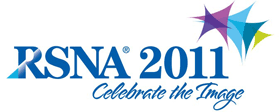
Abstract Archives of the RSNA, 2011
SSM01-02
Mammographic Architectural Distortion: Understanding the Perception to Develop Methods for Teaching
Scientific Formal (Paper) Presentations
Presented on November 30, 2011
Presented as part of SSM01: Breast Imaging (Digital and CT)
Dianne Georgian-Smith MD, Presenter: Consultant, Vizovo
Researcher, Analogics, Inc
Researcher, Siemens AG
John Ryan PhD, Abstract Co-Author: Director, Vizovo Ltd and Vizovo Inc
Eren D. Yeh MD, Abstract Co-Author: Nothing to Disclose
Lorraine B. Smith MBBCh, Abstract Co-Author: Nothing to Disclose
Julie Ann Ritner MD, Abstract Co-Author: Nothing to Disclose
Sara Mannarelli Durfee MD, Abstract Co-Author: Nothing to Disclose
Hope Elizabeth Peters MD, Abstract Co-Author: Nothing to Disclose
Robyn L. Birdwell MD, Abstract Co-Author: Nothing to Disclose
The goal was to determine criteria leading to the perception of architectural distortion (AD) from which a teaching module was developed. The effectiveness of this module was tested on trainees.
Determining Criteria of AD: A Test Set of 50 cases (198 images) was assembled with both positive AD/ negative cases; some had more than one site of AD. Five experienced radiologists completed the Test Set, and each was independently asked “what they saw” on selected cases. From these criteria a tutorial was developed. Self- Tutorial: A powerpoint tutorial illustrated criteria for AD and methods to distinguish AD from overlapping tissues; a second bank of 20 images was produced for practice and provided immediate feedback and the option of reviewing one’s calls vs. truth. Testing effectiveness of tutorial: 4 trainees completed the three phases of this study: the Test Set (50 cases), then the tutorial, and repeat of the Test Set.
1. TEST SET- NO FEEDBACK: 5 experts and 15 trainees completed the Test Set once. The experts performed better than the trainees. The highest ROC 0.96 (expert) and lowest 0.473 (trainee); 2. PRACTICE SET WITH FEEDBACK: Of 4 trainees who completed the Practice set and repeat Test Set, 2/4 reviewed practice cases more than once; both improved ROC's;3. REPEAT TEST SET AFTER TUTORIAL: ROC and sensitivities decreased 3/4 trainees; specificity increased in 4/4 trainees
1. Experienced radiologists perform better than trainees in seeing AD. 2. In preliminary data, the largest impact of the tutorial is the improvement in specificity, but at the expense of decreased sensitivity, as has been noted in screening studies. 3. The data may be skewed since this is a small sample size; further testing is planned.
Study was supported by RSNA Educational Seed Grant.
This study illustrates the importance of testing modules and the importance of understanding the perception of architectural distortion.
Georgian-Smith, D,
Ryan, J,
Yeh, E,
Smith, L,
Ritner, J,
Durfee, S,
Peters, H,
Birdwell, R,
Mammographic Architectural Distortion: Understanding the Perception to Develop Methods for Teaching. Radiological Society of North America 2011 Scientific Assembly and Annual Meeting, November 26 - December 2, 2011 ,Chicago IL.
http://archive.rsna.org/2011/11014086.html

